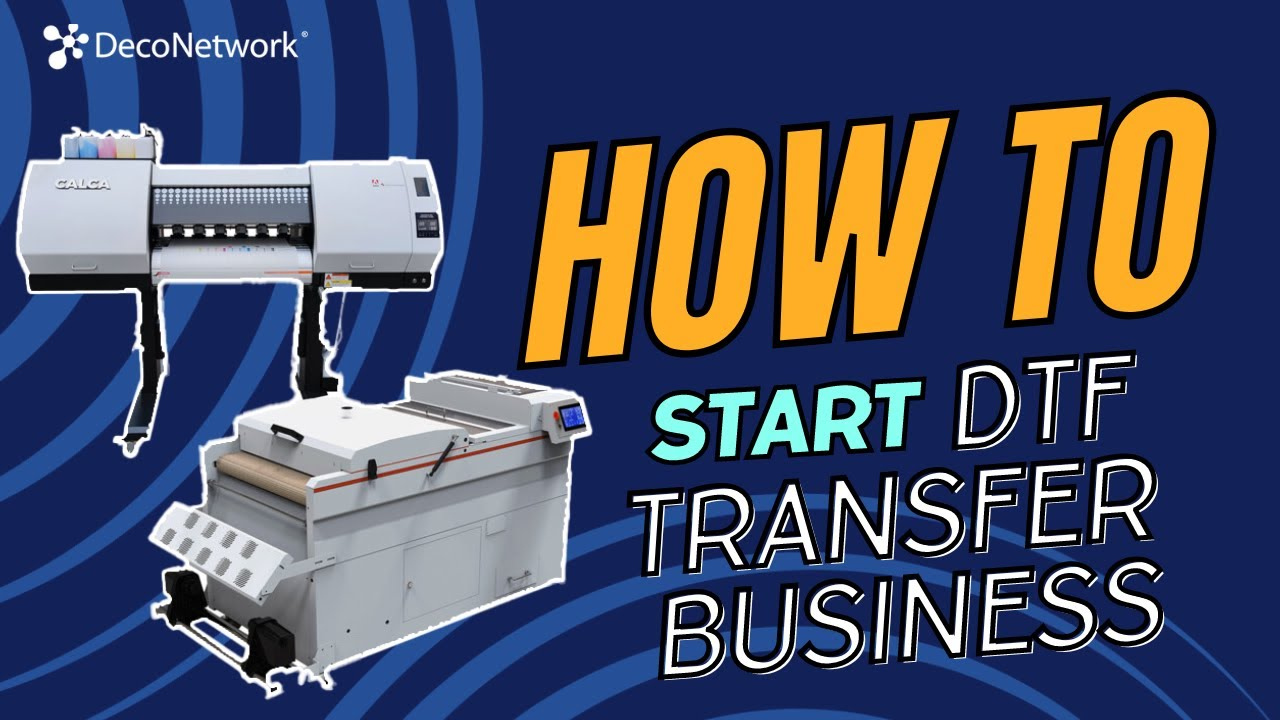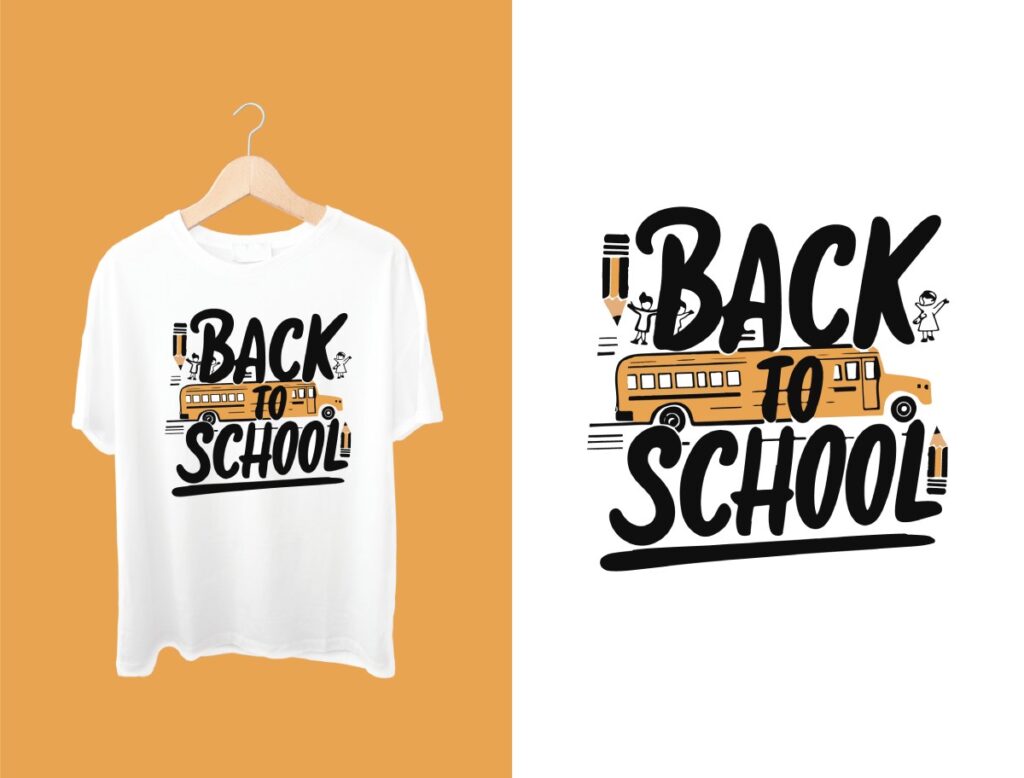The DTF transfer business is quickly becoming one of the most sought-after ventures in the custom apparel industry in 2024. This innovative technique, known as Direct-to-Film printing, allows entrepreneurs to create stunning, high-quality designs that can be transferred onto various fabrics with ease. With the increasing demand for unique and personalized clothing, venturing into the DTF transfer business could be a profitable path. In this DTF business guide, we will cover everything from understanding the technology behind DTF transfer printing to essential steps for launching your own operation successfully. As you explore this thriving market, you’ll discover how to tap into consumer trends and position your custom apparel business for growth.
The realm of custom garment printing is rapidly evolving, making it an ideal time to explore options like film transfers for apparel. Known for their vibrant and long-lasting prints, direct-to-film (DTF) processes are a game-changer in the printing landscape. Entrepreneurs interested in starting this kind of business can benefit from leveraging specialized equipment and high-quality materials to meet consumer demand for personalized clothing. As more individuals seek unique fashion items, understanding how to launch a film transfer business will be key to success. This journey, guided by insights into market research, effective marketing strategies, and quality production, can lead to a flourishing custom apparel enterprise.
Understanding the DTF Transfer Printing Process
DTF printing, or direct-to-film printing, is a revolutionary method in the custom apparel sector. This technology involves printing high-resolution designs onto special transfer films, which are then applied to fabric using heat and pressure. One of the standout features of DTF transfer printing is its versatility; it can be used on a wide range of materials including cotton, polyester, and blended fabrics. The vibrant colors and fine detail achievable with DTF make it a popular choice among custom apparel businesses looking to provide high-quality products that stand out in a crowded marketplace.
Additionally, DTF transfers offer excellent durability, resisting washing and fading far better than many other printing methods. This makes it a preferred choice for businesses aiming to deliver products that last. By understanding and mastering the DTF transfer printing process, you lay a solid foundation for your custom apparel business, ensuring that the products you offer meet the high expectations of your customer base.
Researching Your Market Niche in Custom Apparel
Identifying a specific niche within the custom apparel market is crucial for establishing a successful DTF transfer business. With the vast array of potential markets—including sports teams, corporate events, and fashion brands—it’s important to conduct thorough research to understand where your business can fit in. By honing in on a particular audience, you’ll be better equipped to tailor your marketing strategies, product offerings, and design aesthetics to meet their unique needs and preferences.
Moreover, understanding your competitors is equally vital. Analyzing what similar businesses offer can provide insights into pricing strategies, popular design trends, and customer engagement tactics. This knowledge can help you define your unique selling proposition, ensuring your DTF transfer business stands out from the competition while appealing directly to your target market.
Selecting the Right Equipment for DTF Printing
Investing in quality equipment is a key step in starting your DTF transfer business. A high-performance DTF printer is essential, as it affects both the quality of your prints and your overall production efficiency. When selecting a printer, opt for models specifically designed for DTF applications that can provide excellent ink delivery and support a variety of media sizes. Additionally, proper maintenance of your printer will help ensure consistent quality and reduce downtime.
Beyond the printer, sourcing quality DTF transfer films and heat presses is equally important. The type of film you choose directly impacts the final look and durability of your printed designs. Similarly, a reliable heat press machine can make or break the transfer process; it must uniformly distribute heat and pressure to achieve perfect transfers. By investing in the right equipment from the outset, you’ll be well-equipped to deliver high-quality products that can satisfy and retain customers.
Creating Unique Graphics for Custom DTF Transfers
Graphic design plays a pivotal role in the success of your DTF transfer business. Since the quality and appeal of the designs you offer will directly influence customer interest, it’s worthwhile to either invest time in learning design principles or collaborate with experienced graphic designers. Providing a diverse portfolio of unique and captivating designs will engage potential clients, making your business not just another option, but their preferred source for custom apparel.
Moreover, offering custom design services can significantly broaden your market reach. By allowing customers to personalize designs, you attract a broader audience—from local sports teams needing custom jerseys to businesses seeking promotional apparel. By embracing creativity and innovation in your designs, you will not only enhance customer satisfaction but also foster a loyal client base eager to return for future custom apparel needs.
Building a Strong Online Presence for Your DTF Business
In today’s digital age, a strong online presence is critical for the success of any business, including your DTF transfer enterprise. Start by creating a user-friendly website that showcases your products, highlights customer testimonials, and provides clear contact information. It’s important to ensure your website is optimized for search engines, incorporating keywords related to DTF transfer printing and custom apparel. This optimization will help draw potential customers to your site and establish your business as a credible player in the custom printing industry.
In addition to your website, leveraging social media platforms can dramatically increase your visibility and engagement with potential customers. Regularly post high-quality images of completed projects and behind-the-scenes content to engage your audience. Utilize platforms like Instagram and Facebook, where visuals are key, to showcase your DTF transfers and build a community around your brand.
Implementing Effective Marketing Strategies for Your DTF Transfer Business
Effective marketing strategies are essential for promoting your DTF transfer business. Incorporating search engine optimization (SEO) into your marketing efforts can significantly enhance your online visibility. Consider creating informative blog posts related to DTF printing, such as ‘how to start a DTF business’ or exploring various ‘DTF transfer options’. Additionally, use targeted keywords like ‘custom apparel business’ to further optimize your content and drive organic traffic to your website.
In addition to SEO, consider leveraging paid advertising on platforms like Google and social media to reach a wider audience quickly. By targeting specific demographics that align with your intended market, you can create cost-effective marketing campaigns. Offering discounts or special promotions to first-time customers can also help attract initial interest, encouraging potential buyers to explore your products and services.
Frequently Asked Questions
How to start a DTF transfer business successfully?
To start a successful DTF transfer business, you should first research your market to identify your target niche. Next, invest in quality equipment such as a DTF printer, high-quality transfer films, and a reliable heat press machine. Develop unique designs for your products, establish a strong brand identity and online presence, and implement effective marketing strategies like SEO to attract customers.
What equipment do I need for DTF transfer printing?
For DTF transfer printing, you need essential equipment including a high-quality DTF printer designed for this type of printing, compatible transfer films, and a heat press machine to transfer designs onto fabrics. Investing in durable and effective equipment is crucial for producing vibrant and long-lasting prints.
What are the advantages of DTF transfer printing in the custom apparel business?
DTF transfer printing offers various advantages in the custom apparel business, such as the ability to print on a wide range of fabrics, vibrant colors, exceptional durability of designs, and the ability to create complex graphics with ease. Its versatility makes it a popular choice for businesses wanting to provide unique and personalized apparel.
How can I market my DTF transfer business effectively?
To market your DTF transfer business effectively, focus on building a strong online presence through a well-optimized website and active social media engagement. Utilize SEO techniques to improve visibility on search engines, create engaging content related to DTF printing, and consider targeted advertising campaigns on platforms like Google and social media to reach your ideal audience.
What should I consider when sourcing supplies for my DTF business?
When sourcing supplies for your DTF business, prioritize high-quality inks, transfer films, and reliable equipment. Research suppliers to find reputable brands that offer competitive prices. Consider forming partnerships with suppliers for wholesale purchasing to reduce costs and ensure a consistent supply chain, which is vital for your operations.
Can I offer custom design services with my DTF transfer business?
Yes, offering custom design services is an excellent strategy to differentiate your DTF transfer business from competitors. By allowing customers to personalize their apparel, you can cater to a wider audience, including sports teams, local businesses, and event organizers. Hiring graphic designers or using freelance services can help you develop a diverse portfolio of unique designs.
| Key Point | Details |
|---|---|
| Understanding DTF Transfers | DTF transfers use a film for printing vibrant and durable designs onto fabrics. |
| Market Research | Identify your niche and understand competitors to create a unique selling proposition. |
| Invest in Quality Equipment | Purchase reliable DTF printers, transfer films, and heat press machines for optimal output. |
| Sourcing Supplies | Choose high-quality inks and build partnerships with reliable suppliers. |
| Creative Graphics Design | Offer unique designs and custom services to stand out in the market. |
| Brand Development | Establish a strong brand identity and an engaging online presence. |
| Marketing Strategies | Utilize SEO, content marketing, and targeted advertising for business growth. |
| Customer Service | Prioritize customer feedback and flexible policies to build trust. |
Summary
DTF transfer business presents a lucrative opportunity for entrepreneurs in 2024, as the demand for custom printed apparel continues to rise. By understanding the DTF transfer process and executing the essential steps outlined, including thorough market research, investing in quality equipment, and establishing a strong online presence, new business owners can carve out a niche in a competitive landscape. Emphasizing creative designs, effective marketing strategies, and outstanding customer service will not only attract customers but also foster loyalty and encourage repeat business. Embrace this growing industry with determination and innovation, and your DTF transfer business can flourish amid the vibrant world of custom apparel.



